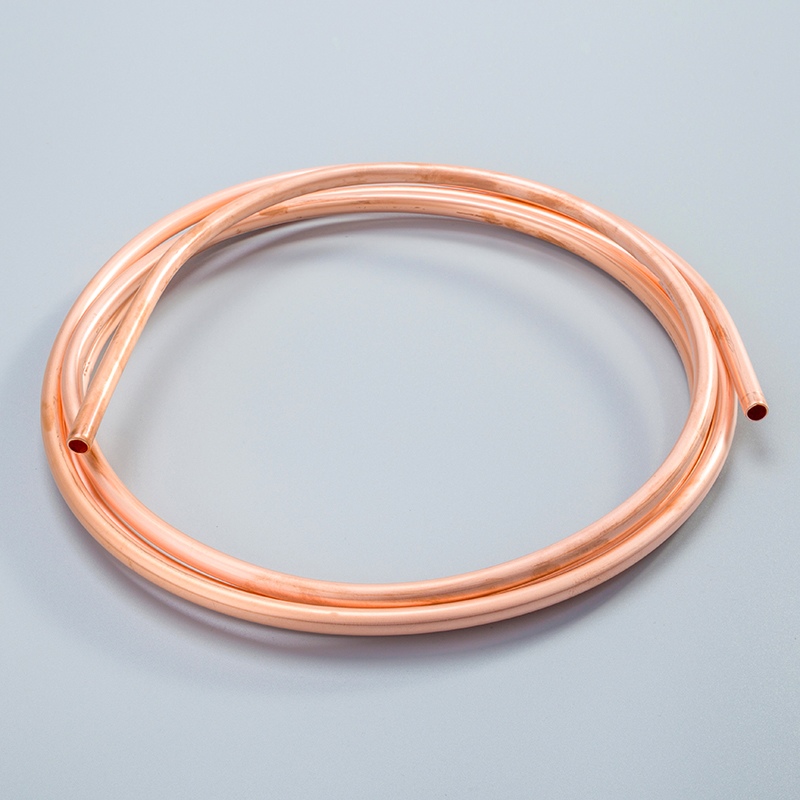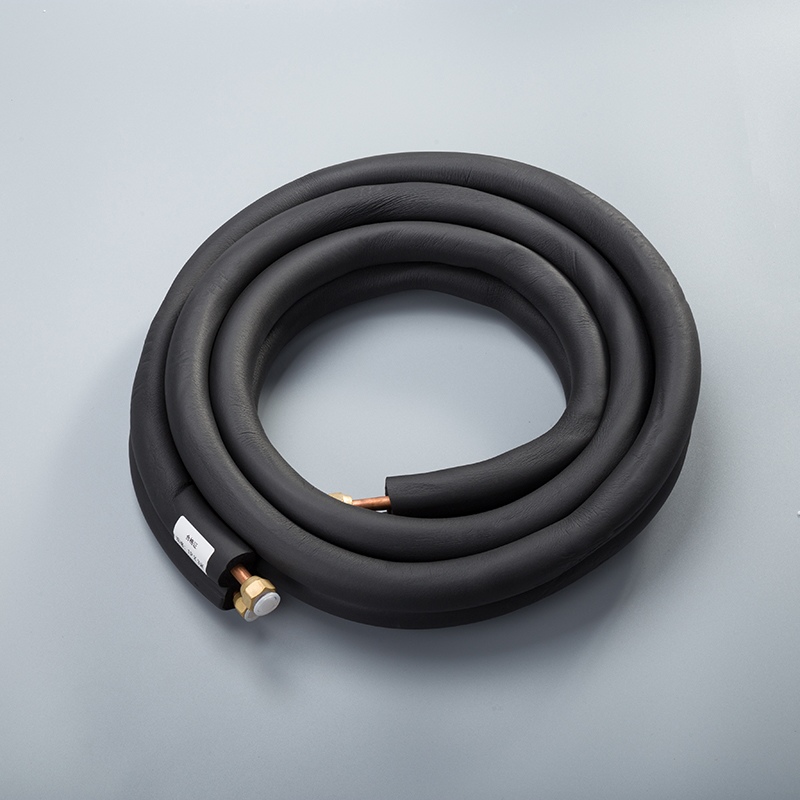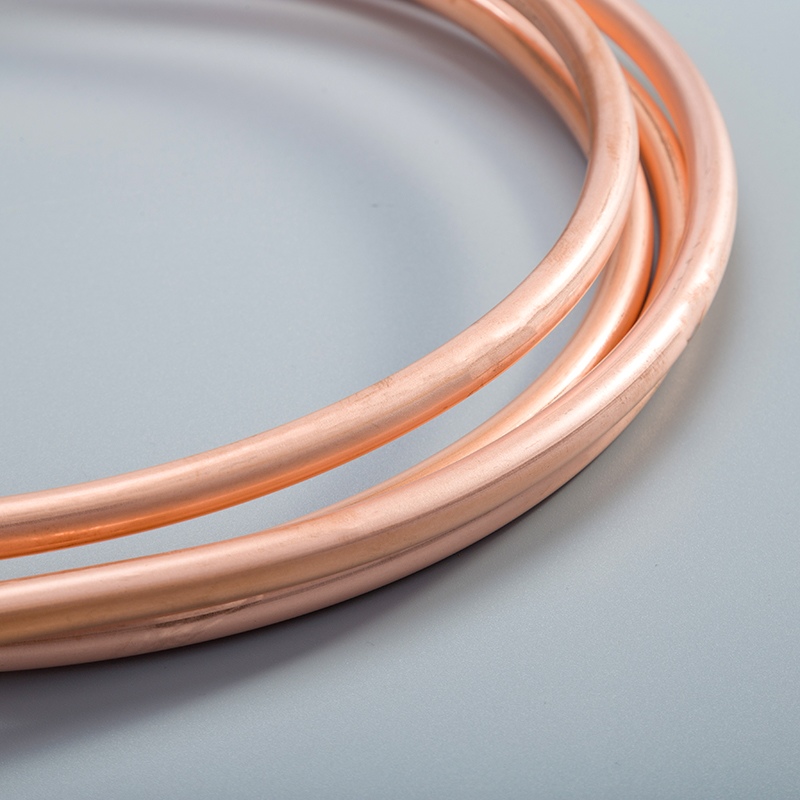How to Measure Copper Pipe Size Accurately

Copper pipes play a crucial role in maintaining clean water systems, significantly reducing harmful bacteria levels compared to alternative materials. Durable and reliable, copper pipes ensure safe drinking water without the risk of chemical contamination. With a lifespan exceeding 50 years, these pipes are the go-to choice for residential plumbing and HVAC systems due to their exceptional corrosion resistance. Their versatility extends to various applications in construction, making them a staple for water supply lines and refrigerant systems. When considering is copper pipe measured by id or od, it's important to note that is copper pipe measured id or od is a common question, and the outside diameter (OD) is typically used for measurement.
Understanding Copper Pipe Sizes
Types of Copper Pipes
Type K: Known for its thick walls and durability, Type K copper pipes are commonly used in commercial buildings, city water mains, and industrial applications. They are available in both hard pipe and flexible roll forms.
Type L: Considered the most common type of copper piping, Type L pipes find extensive use in interior plumbing, fire protection, and some HVAC systems. They come in rigid and flexible variations, making them versatile for various applications.
Type M: With the thinnest walls among the main types of copper pipes, Type M pipes are often chosen for water distribution systems where cost-effectiveness is a priority.
Nominal vs. Actual Pipe Size
Explanation of nominal size
When referring to copper pipe sizes, the term "nominal size" denotes the designated size of the pipe based on traditional measurements rather than its actual dimensions. For instance, a nominal 1-inch copper pipe may not measure exactly 1 inch in diameter due to historical sizing conventions.
Explanation of actual size
In contrast to nominal sizing, the actual size of a copper pipe refers to its precise physical measurements. This includes accurate readings of the pipe's outer diameter (OD) and inner diameter (ID), providing precise details crucial for fittings and installations.
Pipe Sizing Standards
American National Standards Institute (ANSI)
The American National Standards Institute (ANSI) establishes guidelines for various industries to ensure uniformity and compatibility. In the realm of copper pipes, ANSI standards help manufacturers produce pipes that meet specific criteria for quality and performance.
Copper Development Association (CDA)
The Copper Development Association (CDA) plays a vital role in setting industry standards related to copper materials. By collaborating with experts and stakeholders, CDA develops guidelines that promote safe usage practices and enhance the overall reliability of copper piping systems.
Tools for Measuring Copper Pipe Size

Measuring Tape
Using a measuring tape
To measure the size of a copper pipe accurately, start by wrapping the measuring tape around the pipe's outer diameter. Ensure that the tape is snug but not too tight to distort the measurement. Make a clear mark where the tape meets and then measure this length precisely.
Tips for accurate measurement
When using a measuring tape, always double-check your measurements to avoid errors. Ensure that the tape is flat against the pipe without any twists or bends that could affect the reading. Additionally, take multiple measurements at different points along the pipe to account for any irregularities in its shape.
Calipers
Types of calipers (digital, vernier)
Calipers come in various types, including digital and vernier models, each offering unique advantages for measuring copper pipes. Digital calipers provide precise digital readings, while vernier calipers offer accuracy through manual scale readings. Choose the type that best suits your measurement needs.
Step-by-step guide to using calipers
When using calipers to measure copper pipe size, gently close the jaws around the outer diameter of the pipe and take note of the reading displayed on the device. Ensure that the calipers are aligned perpendicular to the pipe's surface for an accurate measurement. Repeat this process at different points for consistency.
Pipe Sizing Charts
Reading a pipe sizing chart
Pipe sizing charts provide valuable information on standard pipe sizes and dimensions for easy reference during installations or repairs. Locate the corresponding values on the chart based on your measurements to determine the appropriate size of copper pipe required for your specific application.
Converting measurements using charts
If you need to convert measurements between different units or standards, refer to pipe sizing charts for quick and accurate conversions. These charts typically include conversion factors and formulas to help you translate measurements effectively without errors or miscalculations.
Step-by-Step Guide to Measuring Copper Pipe Size

Preparing for Measurement
Gathering necessary tools
Select the appropriate measuring tool based on the pipe's size and accessibility.
Ensure you have a clean measuring tape or calipers for accurate readings.
Check that the area around the pipe is clear to allow easy measurement without obstructions.
Ensuring the pipe is clean and accessible
Clean any dirt or debris from the surface of the copper pipe using a cloth or brush.
Verify that there are no obstacles blocking access to the entire length of the pipe.
Position yourself in a comfortable stance to facilitate precise measurements without strain.
Measuring the Diameter
External diameter measurement
Wrap your measuring tape around the outer circumference of the copper pipe gently but securely.
Mark where the tape meets, ensuring it sits flat against the pipe for an accurate reading.
Record this measurement carefully before proceeding to calculate the diameter.
Internal diameter measurement
Use specialized calipers to measure the inner diameter of the copper pipe accurately.
Place the calipers inside the pipe and gently close them until snug against opposite sides.
Read and note down this internal diameter measurement for comprehensive sizing information.
Measuring the Length
Straight pipe measurement
Extend your measuring tape along the length of straight copper pipes from end to end.
Avoid bending or flexing the tape during this process to maintain precision in your measurements.
Record this length measurement for reference in installations or replacements.
Measuring curved or bent pipes
Utilize a flexible measuring tape or string to follow along curved sections of copper pipes.
Adapt your approach by conforming to bends while maintaining contact with all points along these sections.
Calculate an average length based on multiple measurements for accurate sizing considerations.
Practical Applications and Tips
Common Measurement Mistakes to Avoid
Misreading the Measuring Tool
Improper interpretation of measurement devices can lead to inaccurate readings, impacting subsequent installations or replacements.
Ensure proper alignment and clear visibility when using measuring tools to prevent misinterpretation.
Refer to user manuals or guides for specific instructions on utilizing different measurement instruments effectively.
Not Accounting for Pipe Thickness
Neglecting the thickness of copper pipes can result in incorrect sizing calculations, affecting the compatibility of fittings and connectors.
Consider both the outer diameter (OD) and inner diameter (ID) measurements, accounting for variations in pipe thickness throughout its length.
Verify the accuracy of your measurements by cross-referencing multiple points along the pipe's surface.
Tips for Consistent Accuracy
Double-Checking Measurements
Validation through double-checking ensures precision in your measurements, reducing errors that could compromise project outcomes.
Reassess your initial readings by repeating the measurement process using a different tool or method for verification purposes.
Implement quality control measures to confirm the reliability of your measurements before proceeding with any installations.
Using Multiple Tools for Verification
Leverage a combination of measuring tools such as tapes, calipers, and digital devices to validate your findings comprehensively.
Benefit from diverse measurement techniques to minimize discrepancies and enhance overall accuracy in determining copper pipe sizes.
Explore innovative technologies that offer automated solutions for detecting joints or providing advanced measurement data.
Real-World Applications
Plumbing Installations
Automated Solution for Detecting Joints: Implementing automated systems can streamline quality control processes in plumbing installations, ensuring precise fittings without defects. This technological advancement prevents potential issues and optimizes workflow efficiency.
HVAC Systems
Advanced Pipe Measurement Tools: Utilizing cutting-edge technologies enhances accuracy in sizing copper pipes for HVAC systems. These advanced tools provide detailed measurements, facilitating seamless integration within complex heating and cooling setups. By embracing innovation, HVAC professionals can deliver superior performance and energy efficiency.
Summarize the significance of precise copper pipe measurements.
Emphasize the impact on successful plumbing and HVAC installations.
Practice measuring skills diligently for improved accuracy.
Explore online tutorials and guides for further insights.
See Also
Mastering the Art: Measuring Copper Pipe Dimensions
Simple Steps: Mastering Copper Pipe Measurement
Quick Tutorial: Measuring Copper Pipe for DIY Projects


